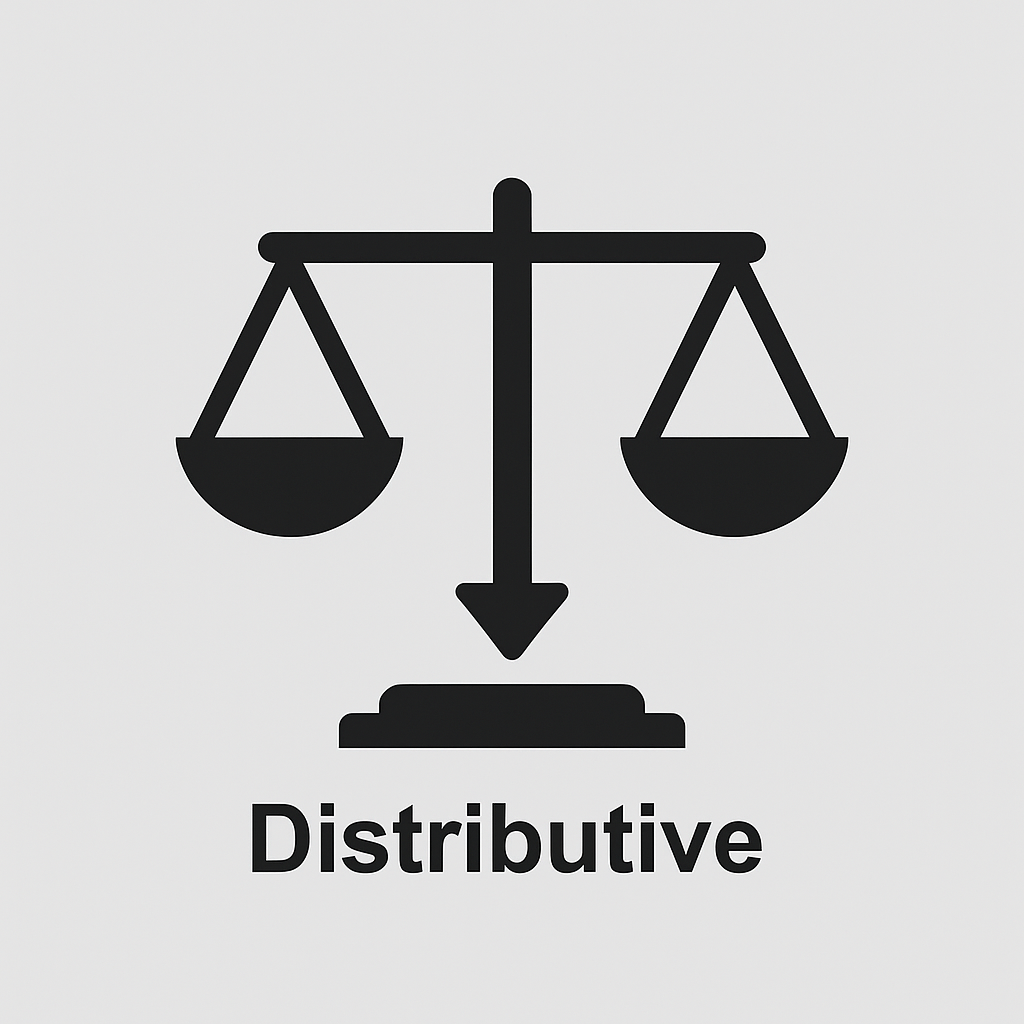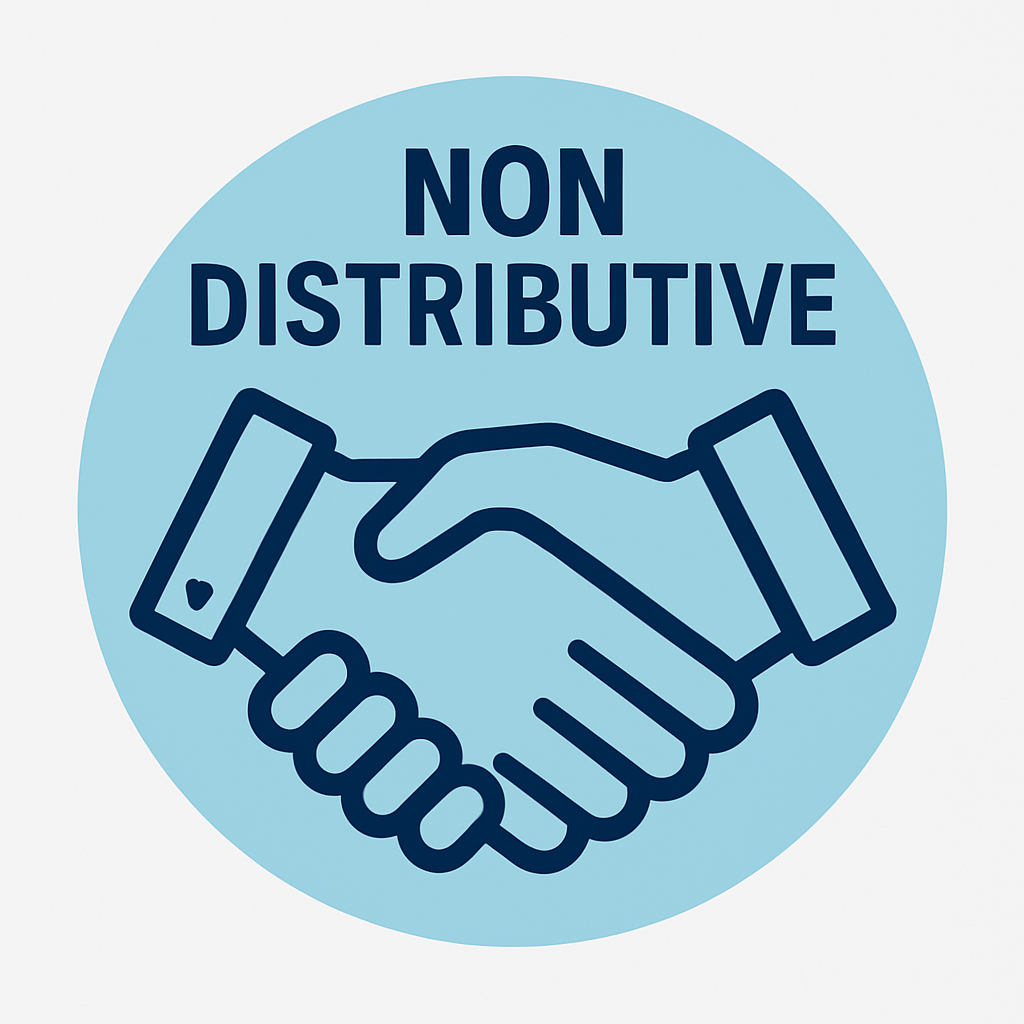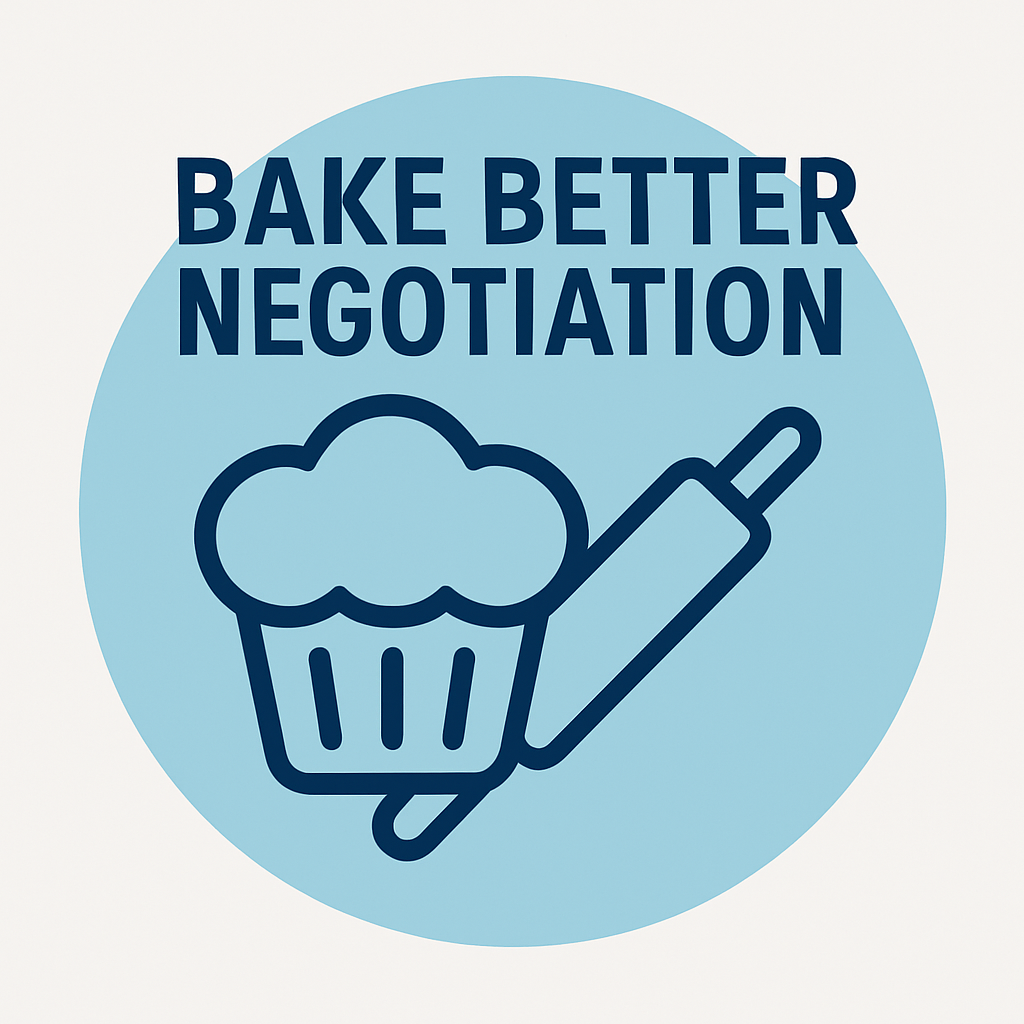Introduction: Why Negotiation Strategy Should Shape Your Growth Plan
One of the biggest shifts I made as a business owner was learning to see negotiation not as a skill, but as a strategy.
Most people treat negotiation like something you pull out when it’s time to haggle over price — you brace yourself, tighten your stance, and aim to walk away with a win. I used to do the same. I thought being good at negotiation meant holding firm, not blinking, and “winning” the conversation.
But over the years — and through a few painful lessons — I realised that how you negotiate determines far more than what you pay or get paid. It shapes the way your business grows, the kind of relationships you build, and how far people are willing to go with you.
Let me explain.
When I first started hiring freelancers, I approached it like a buyer at a market. I negotiated every rate, scrutinised every hour, and tried to shave as much off as possible. Sure, I got a good deal — short term. But I also churned through people, lost time retraining, and had zero loyalty. I was thinking transactionally, not strategically.
Later, when I brought on a long-term business partner, everything changed. We negotiated a deal that worked for both of us — not just financially, but in vision, roles, and contribution. It wasn’t about “who gets more” — it was about how we both win over time. That business still runs smoothly years later because the negotiation was built on aligned goals, not a zero-sum outcome.
This is the core difference between distributive and non-distributive (integrative) negotiation. And understanding when to use each — and how — can make or break your business strategy.
Distributive negotiation is competitive. It’s about dividing the pie. One side wins more, the other gets less. It works when you’re negotiating a one-time deal — say, buying office equipment or a fixed-rate contract.
Non-distributive negotiation is collaborative. It’s about baking a bigger pie together. It’s how you build long-term vendor relationships, attract great team members, or structure joint ventures.
In this blog, I’ll break down what each style looks like, where I’ve seen them succeed (and fail), and how you can choose the right approach based on your growth goals.
Because if your business plan involves people — and trust me, it does — negotiation isn’t just a tactic. It’s one of the most powerful levers you have to scale.
 1: What Is Distributive Negotiation?
1: What Is Distributive Negotiation?
Distributive negotiation is what most people instinctively think of when they hear the word “negotiation.” It’s a win-lose scenario — also called zero-sum bargaining — where one party’s gain is the other party’s loss. There’s a fixed amount of value (often money) on the table, and both sides are trying to claim as much of it as possible.
It’s like splitting a pie: the bigger my slice, the smaller yours.
In business, distributive negotiation usually shows up around price — and often only price. There’s little room for collaboration, and the relationship is either non-existent or not expected to last.
Here’s a basic example:
You’re hiring a one-off designer for a logo. You don’t plan on using them again. You want the best deal. They want the highest rate. You meet in the middle. No extras, no long-term partnership. The job gets done, you move on.
This approach makes sense in the right context:
- One-time purchases or contracts.
- Transactions where no relationship is needed.
- Commoditised services or products.
- Situations where time is critical and ongoing negotiations aren’t feasible.
In fact, large companies use distributive tactics all the time. Think of Walmart — their buying teams are legendary for squeezing suppliers hard to keep consumer prices low. They’re not interested in “win-win” relationships with every vendor. Their model is based on margin, volume, and power. If you can’t match their terms, they’ll find someone else who can.
But here’s the downside for small businesses: distributive negotiation can backfire when applied to the wrong situations. I’ve seen it happen in:
- Vendor relationships which sour because the supplier feels squeezed.
- Freelancers who quietly drop clients after being nickel-and-dimed.
- Customer interactions where constant discounting devalues the brand.
One client of mine kept negotiating down the rates of every subcontractor he hired. On paper, he was saving thousands. But over time, he noticed missed deadlines, rising churn, and declining quality. He wasn’t saving — he was silently paying the price elsewhere. Distributive negotiation also has long-term consequences:
- It can damage your reputation as “hard to work with”.
- It reduces trust and loyalty.
- It invites future negotiations to always be about price.
That said, there is a time and place for it. When used deliberately — with clear limits and in non-relationship-heavy contexts — it can protect your margins and give you fast wins. Just don’t use it where collaboration is the growth strategy.
 2: What Is Non-Distributive (Integrative) Negotiation?
2: What Is Non-Distributive (Integrative) Negotiation?
If distributive negotiation is about slicing the pie, non-distributive negotiation is about baking a bigger one. Also known as integrative negotiation, this approach focuses on collaboration, mutual benefit, and long-term value. Instead of battling over fixed resources, both parties look for ways to expand the deal so everyone walks away better off.
It’s not about who wins but how both sides can win more.
Here’s What That Looks Like in Practice:
Let’s say you’re hiring a marketing consultant. You could argue them down on price like it’s a one-off gig (distributive). Or you could say:
“I’ve got a 3-month runway and a limited budget, but I’m planning to grow fast. If this works, I’ll need you on retainer. Can we build a package that fits now, and scales up later?”
That’s non-distributive thinking.
You’re still negotiating, but you’re looking beyond the immediate numbers to create a relationship with upside. You’re treating the consultant like a growth partner, not just a cost line.
Where This Approach Works Best:
- Hiring key team members or contractors.
- Building long-term vendor relationships.
- Partnering on joint ventures or collaborations.
- Negotiating equity or profit shares.
- Structuring long-term customer accounts or retainers.
It’s especially powerful when:
- Trust matters.
- Future value is unclear but promising.
- The relationship affects other parts of your business (like referrals, consistency, or quality).
Real-World Example: Starbucks & Ethical Sourcing.
A textbook example of integrative negotiation is Starbucks’ relationship with its coffee farmers. Instead of just driving down price, they invested in programs to help farmers grow better crops, stabilise supply chains, and improve livelihoods.
Why? Because they understood that long-term supply chain resilience was worth more than short-term cost savings. Starbucks created a system where both they and their suppliers benefited, and it strengthened their entire business model.
When It Goes Wrong: AOL & Time Warner.
However, integrative strategies only work if the interests are truly aligned and the execution is sound. The AOL-Time Warner merger in 2000 was built on a non-distributive vision: digital media and legacy media coming together to “create more value.” On paper, it looked great. In reality, it collapsed because the cultures, incentives, and goals weren’t aligned. Collaboration without clarity led to confusion and failure.
For Small Business Owners:
Non-distributive negotiation is where real growth happens. It builds:
- Stronger relationships.
- Higher retention.
- More referrals.
- Bigger deals over time.
But it requires a mindset shift. You have to stop seeing negotiation as a tug-of-war and start treating it as a design process. What’s the outcome you want? What outcome does the other side need? Where’s the overlap?
It’s slower. It takes more effort. But the rewards compound.
3: How These Strategies Influence Growth.
The way you negotiate today has a direct effect on how your business grows tomorrow. Most small business owners see negotiation as a momentary act — you sit down, hash it out, and move on. But the strategy you use in those moments sends signals, sets expectations, and shapes the kinds of people, partners, and customers you attract.
Let’s break it down.
Distributive Strategy = Fast Wins, Fragile Foundations.
Distributive negotiation is often driven by short-term goals:
- Lower your costs.
- Close the deal quickly.
- Maximise this specific outcome.
And it works — in the right context. If you’re buying equipment, negotiating a lease, or working with suppliers where loyalty and quality are commoditised, squeezing hard might improve your margins.
But there’s a cost.
When you treat every negotiation like a battlefield, you create:
- Low trust (partners won’t go the extra mile).
- High churn (freelancers or suppliers quietly leave).
- Shallow relationships (clients see you as replaceable, not irreplaceable).
You might save £500 on a vendor this quarter — but lose £5,000 in downtime and replacement costs later. Over time, this approach can undermine your ability to scale, especially in service-based businesses, because it doesn’t build goodwill or leverage, just resistance.
Non-Distributive Strategy = Slower Starts, Stronger Scaling.
Non-distributive negotiation, on the other hand, often starts with smaller, slower wins. You might invest more time. You might pay more upfront. But you gain:
- Loyalty — clients stick with you longer.
- Shared vision — partners want to grow with you.
- Reputation — people see you as collaborative, not combative.
Let’s say you hire a VA and pay them slightly above market, but you take the time to train them, involve them in your processes, and give them room to grow. In return, you get someone who thinks with you, not just for you.
That’s growth fuel.
Imagine partnering with a supplier not based on the lowest bid but on how well they understand your brand and values. You might pay a bit more, but you’ll get consistency, shared standards, and faster turnarounds. These advantages are compounded because good people stay, good systems stick, and good deals scale.
So What’s the Strategic Takeaway?
Use distributive tactics for what they’re meant for: one-time wins where there’s little at stake beyond the price.
Use a non-distributive strategy when:
- The relationship matters.
- You’ll be working with this person or company again.
- The outcome involves more than just money.
And most importantly — be deliberate.
Too many small business owners default to distributive negotiation out of fear or scarcity. But growth comes from knowing where to collaborate and where to compete — and using the right tool at the right time.
4: How to Choose the Right Strategy in Your Business.
Choosing between distributive and non-distributive negotiation isn’t about being “nice” or “tough” — it’s about being strategic.
If you’re running a small business, you’re constantly negotiating with clients, suppliers, team members, landlords, banks, and even yourself. And every time you negotiate without intention, you run the risk of undermining your bigger goals.
So, how do you choose the right approach?
Start by Asking These 3 Key Questions:
4.1. Is this a one-off or a long-term relationship?
If you’re never going to deal with this person again — like a one-time supplier or a one-off contractor — a distributive approach may make sense.
If you are going to deal with them again, or if the outcome depends on ongoing collaboration, use a non-distributive mindset.
Example:
- One-time flyer printing → Distributive.
- Ongoing branding partner → Non-distributive.
4.2. Is there value beyond price?
If the only thing that matters is the number, sure, push hard. But often there’s more at stake: quality, reliability, responsiveness, expertise. These things aren’t visible on a quote, but they drive long-term value.
Example:
- The cheapest web developer might cost less up front, but can cost more in fixes, delays, and poor UX.
- A strategic developer might build something scalable and future-proof, even if it’s more expensive now.
4.3. What are you trying to build — and does this help or hurt that?
This is the kicker. Every negotiation should serve your overall business plan. That means understanding when to maximise short-term margin and when to invest in long-term leverage.
Are you trying to:
- Cut costs today to survive?
- Build capacity for growth?
- Attract top talent?
- Retain clients for longer?
- Build a strong supplier network?
Each of those answers points to a different negotiation strategy.
The Risk of Mixing Strategies.
One of the biggest mistakes I see small business owners make is mixing negotiation styles in the wrong places.
For example:
- Using hard-nosed distributive tactics when hiring, and then wondering why good people don’t stick around.
- Collaborating generously with clients but nickel-and-diming contractors, which leads to inconsistent delivery and broken trust.
- Offering premium services, but training your customers to expect discounts, eroding your pricing power.
These aren’t just “style issues” — they’re strategic leaks.
Build a Negotiation Map.
As part of your planning process, identify:
- Where you need to win quickly.
- Where you need to build deeply.
- Which relationships are transactional.
- Which ones are transformational.
From there, choose your approach on purpose, not from habit, fear, or instinct.
 5: How to Bake Better Negotiation Thinking into Your Business Plan.
5: How to Bake Better Negotiation Thinking into Your Business Plan.
Most business plans include numbers, timelines, marketing, and goals, but very few include a negotiation strategy. And that’s a huge mistake.
Because every major growth milestone you’ll pursue — hiring, partnerships, funding, pricing, vendor agreements — depends on negotiation. If you’re not thinking ahead about how you’ll negotiate, you’re leaving outcomes to chance. Worse, you may unknowingly sabotage the very plan you’ve worked so hard to build.
Here’s how to fix that.
5.1. Map Out Your Key Negotiation Points in Advance.
Look at your 90-day, 6-month, or 12-month goals. For each key move, ask:
- Who will I need to negotiate with?
- What’s at stake (money, time, loyalty, equity)?
- Will this be a one-time interaction or an ongoing relationship?
- What’s my ideal outcome — and what’s theirs?
Write these down. That becomes your Negotiation Map — a tool that forces you to treat negotiation as part of the plan, not just something you “handle” when it comes up.
Example:
- Planning to hire a VA? → Consider pay, scope, hours, and growth path.
- Launching a new service? → Think about pricing objections and client pushback.
- Negotiating better supplier terms? → Know whether you’re seeking a short-term margin boost or a long-term partnership.
5.2. Match the Right Strategy to the Right Situation.
Once you’ve mapped the key points, assign the correct approach:
- Distributive for short-term, price-based decisions.
- Non-distributive for long-term, trust-based relationships.
This forces you to be deliberate, rather than reactive. It also gives you a filter to train your team (if you have one) on how to approach negotiation consistently.
5.3. Define Your Deal-Making Principles.
This is crucial for protecting your brand and your sanity. You need a set of internal rules that keep you from negotiating out of fear or emotion.
Ask yourself:
- What will I never compromise on?
- Where am I willing to flex — and why?
- How do I want people to feel after negotiating with me?
Use these to build a simple Negotiation Code of Conduct for your business. Keep it to one page, but refer to it often.
5.4. Don’t Forget Internal Negotiations.
This one surprises people: you’re negotiating with yourself all the time.
- Should I discount my price to land the client?
- Should I say yes to that awkward partnership?
- Should I keep doing everything myself to “save money”?
Every one of these is a negotiation, and your default decisions shape the direction of your business.
If you plan for them — write out your thresholds, set your red lines, and decide in advance what matters — you remove emotion from the process and make better decisions, faster.
5.5. Review and Refine Quarterly.
Business plans shouldn’t sit in drawers. Neither should negotiation strategies.
Every 90 days, review your negotiation map:
- What worked?
- What didn’t?
- Where did you give away too much?
- Where did you hold firm and win?
This will sharpen your instincts and make you a strategic negotiator, not just a reactive one.
When you start treating negotiation as a part of your business architecture, not just a skill you use in isolated moments, you unlock a completely different level of growth.
- You start creating deals that align with your vision.
- You build relationships that compound over time.
- You stop bleeding margin through poor decisions.
And most importantly, you step into the role of strategic leader, not tactical operator.
 Final Word: Don’t Just Negotiate — Design Your Growth.
Final Word: Don’t Just Negotiate — Design Your Growth.
If you’ve ever walked away from a deal thinking, “That didn’t feel quite right,” it probably wasn’t the numbers that were off — it was the strategy.
What this blog should make clear is that negotiation is not just about price or persuasion. It’s about alignment, intention, and planning. It’s about knowing when to fight for every penny and when to step back and invest in relationships that fuel your long-term success.
The biggest trap I see small business owners fall into is using the wrong tool at the wrong time. They push hard on people they should be collaborating with, and give too much away in situations where they should be holding their ground. Not because they lack intelligence or experience, but because they haven’t linked negotiation thinking to business planning.
And that’s what this is really about: strategy.
When you start weaving negotiation into your planning process, everything becomes clearer:
- You know which clients to walk away from.
- You know which partnerships to double down on.
- You negotiate from confidence, not fear.
- You stop defaulting to discounts and start defending value.
- You build a business model that protects your margin and your relationships.
So here’s your next step:
Look at your upcoming quarter. Identify three moments where you’ll need to negotiate with clients, suppliers, team members, or even yourself. Then ask: what’s the best strategy for this situation?
Build that into your plan. Write it down. Rehearse it.
Real business growth doesn’t just come from selling more. It comes from negotiating smarter — and turning every deal into a stepping stone toward the future you’re building.
Your Next Step: Want to Master the Art of Smart Negotiation?
Every deal you make — whether it’s with a client, a supplier, or a potential partner — either builds your business or chips away at it.
If you’re tired of:
- Discounting just to win the work.
- Feeling like you gave too much away.
- Struggling to stand firm in the face of pricing pushback.
- Wondering whether you’re being too soft… or too aggressive.
Then it’s time to change that — with Negotiation 101.
Inside this course at Business-Skills-Mastery.com, you’ll learn:
- The difference between distributive and non-distributive tactics — and when to use each.
- How to prepare for any negotiation with clarity and confidence.
- What to say, when to say it, and how to hold your ground.
- How to turn negotiation into a strategic asset, not a last-minute scramble.
If you want to negotiate smarter, protect your margins, and grow with confidence, this is where you start.
👉 Click here to access the Negotiation 101 course now
Let’s stop winging it. Let’s start negotiating like a business owner who means business.







